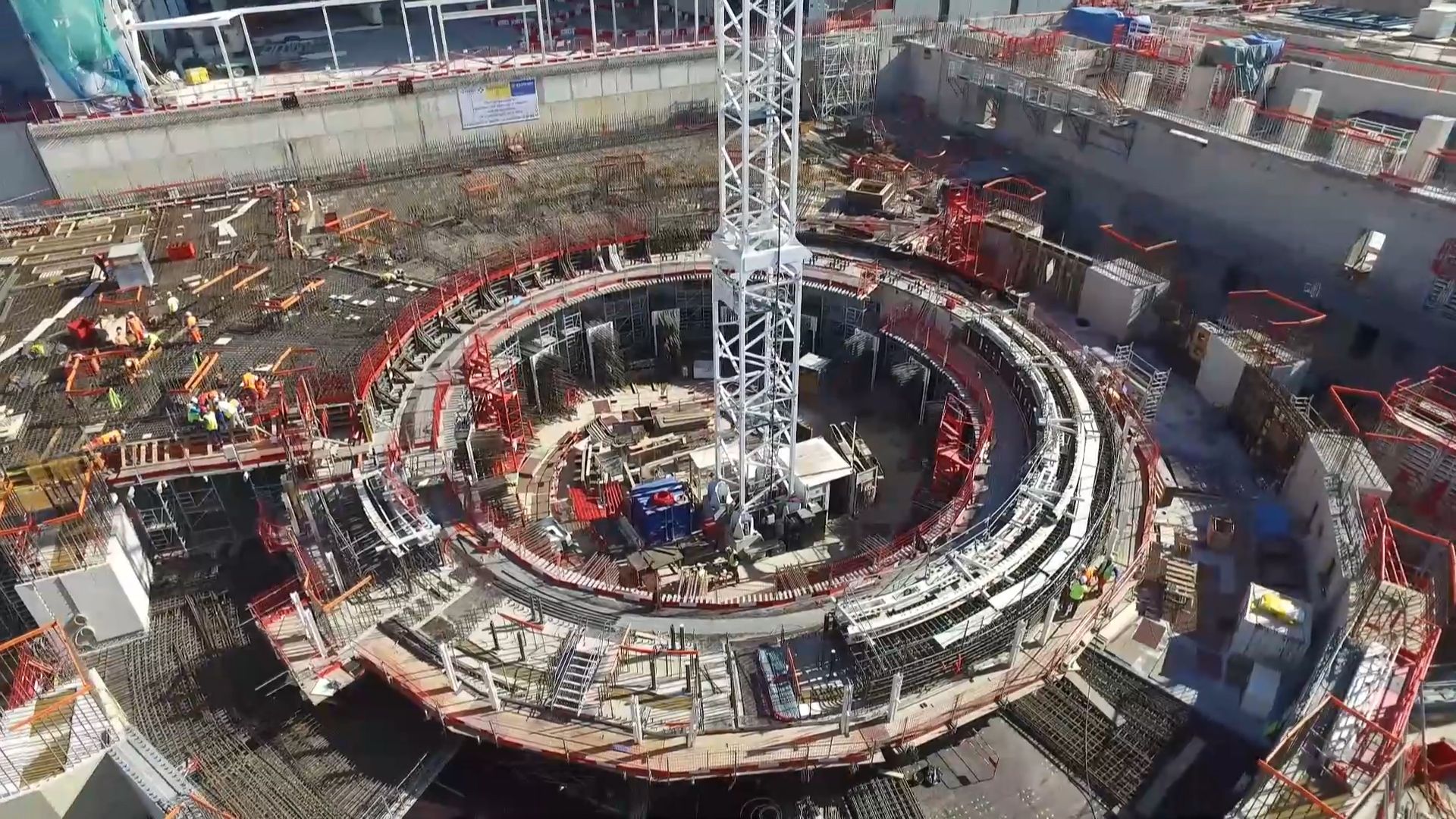

Nuclear processes cause the atom to release energy in the form of heat, as well as radiation, which leads the controversy over nuclear energy. Unfortunately, the process of implementing nuclear fission is not at all that simple. Knowing this detail, it appears nuclear reactors have a much higher energy to fuel ratio than conventional fossil fuel power plants. This isotope must be processed before it is used in the nuclear reactor, and a small pellet of the processed Uranium-235 “produces roughly the same amount of energy as 150 gallons of oil” (EIA, 2014). Uranium-235 is also used because of how easy it is to set off a chain reaction within this element (EIA, 2015). The most common material used in nuclear reactors is Uranium-235 because of how easy it is to split apart the atom’s nucleus. The thermal energy produced by the nuclear fission process turns water into steam, which then spins turbines (EIA, 2014). Nuclear fission fits into a conventional power plant by using the thermal energy process. The power grid uses transmission lines to distribute the electrical current produced. The rotation of the turbines produces electricity by changing the magnetic field around the coils it is rotating within. For thermal energy, water is boiled to produce steam, which is then forced to rotate turbines. Through the mechanical energy method, turbines spin using mechanical force produced by the fuel. Then this new form of energy is used to produce electrical energy. In order to generate power, nuclear power plants must successfully convert the energy released from nuclear fission, and they do so in a long tested manner.Ī conventional power plant converts the potential energy of one substance into another form of energy, which is generally mechanical energy or thermal energy. In nuclear reactors today, nuclear fission is the only method used, and an example of how nuclear fission works can be seen in Figure 1 (EIA, 2014).

It remains a field of ongoing research because of the difficulty in maintaining a nuclear fusion chain reaction (World Nuclear Association, 2014). Although nuclear fusion yields almost four times the energy than that of nuclear fission it is not a method that is utilized. The energy released is then harnessed and used to make electrical power. In nuclear fission the nucleus of an atom is split into two smaller atoms using neutrons, whereas, in nuclear fusion the nucleus of an atom is forced to combine with another nucleus of a separate atom to form a larger atom (EIA, 2015). Nuclear energy is the energy stored inside of the nucleus of an atom, and it can be released using two methods, nuclear fission or nuclear fusion (EIA, 2014). Nuclear power is the conversion of nuclear energy to useable energy, which in this case is electrical energy (EIA, 2015). This article will discuss the process behind electrical generation at most conventional power plants, how nuclear energy is harnessed to produce electrical energy, how electrical and computer engineers have been affecting this field, and where nuclear power is headed for in the future. Within the realm of renewable energy, nuclear power has been one of the most controversial topics. Coal, Wood, and Petroleum), but there have been efforts made to move towards renewable energy (i.e. Today, the most popular energy sources are fossil fuels (i.e. Mankind has followed a general trend over time that consists of growing rates of energy consumption with a mismatch in growth for new or renewable energy sources (Energy Information Administration, 2011). Renewable energy is a topic in world news that has been growing at an alarming rate. Within the topic of electrical and computer engineers the article discusses various systems within the plant used to protect the plant’s workers and the surrounding environment designed and built by these engineers. It also discusses the pros and cons of nuclear energy and where nuclear energy is headed for in the future. Within the topic of nuclear power, the article covers the definition of nuclear energy, as well as, how power plants convert it to electricity. This article discusses the topic of nuclear power and how electrical and computer engineers affect the industry.


 0 kommentar(er)
0 kommentar(er)
